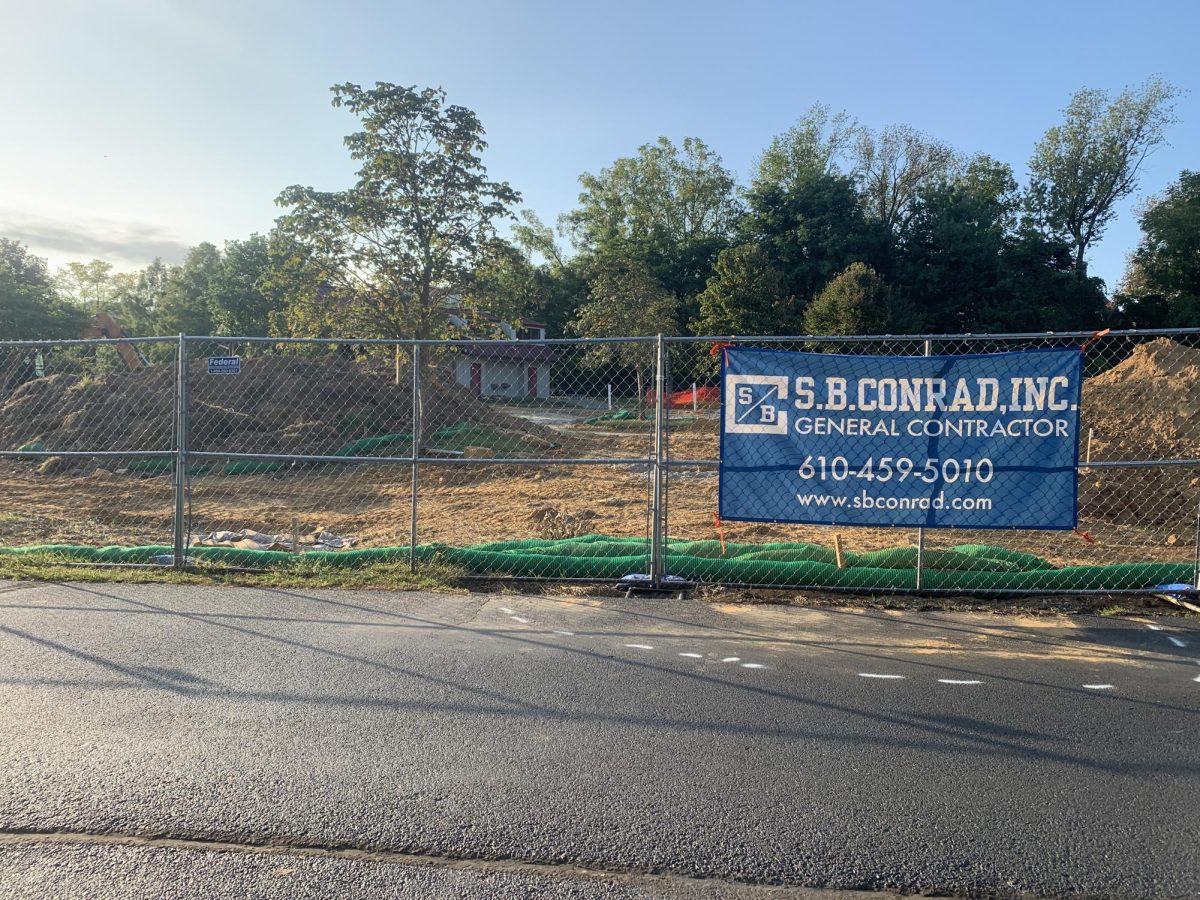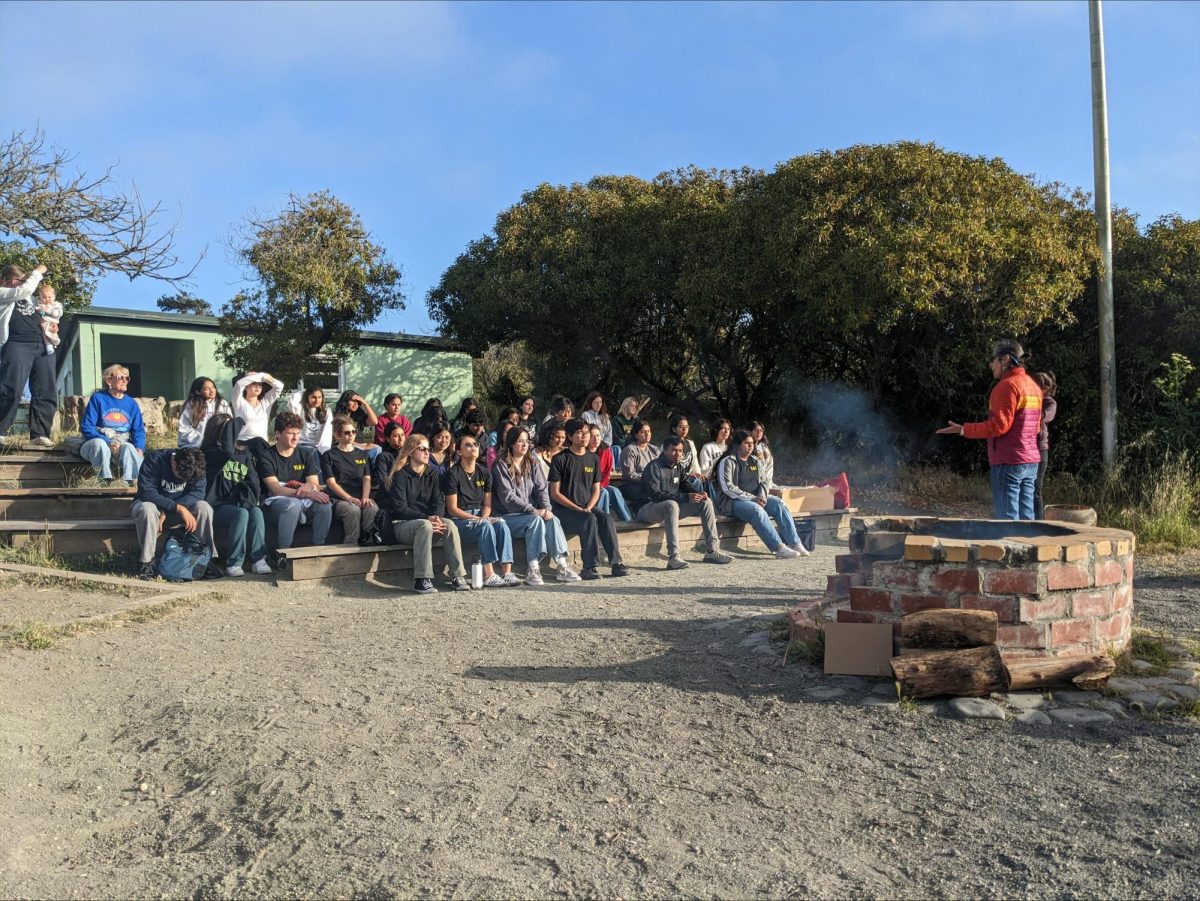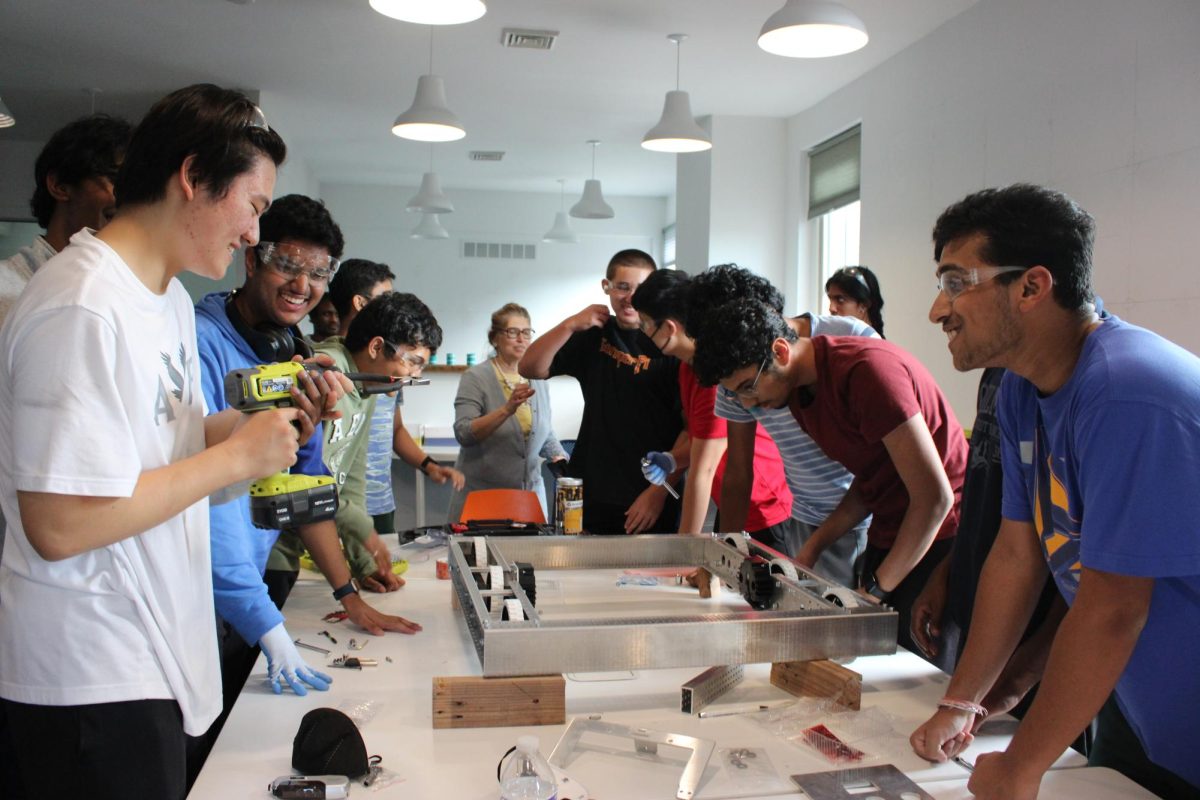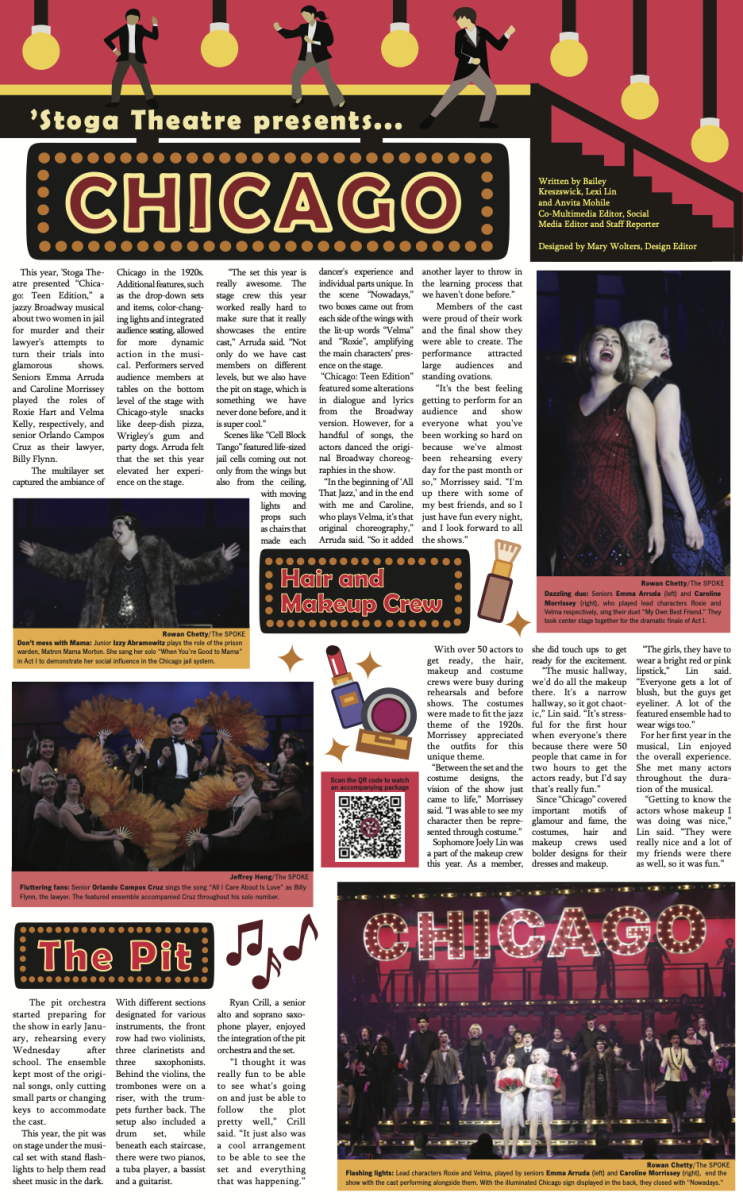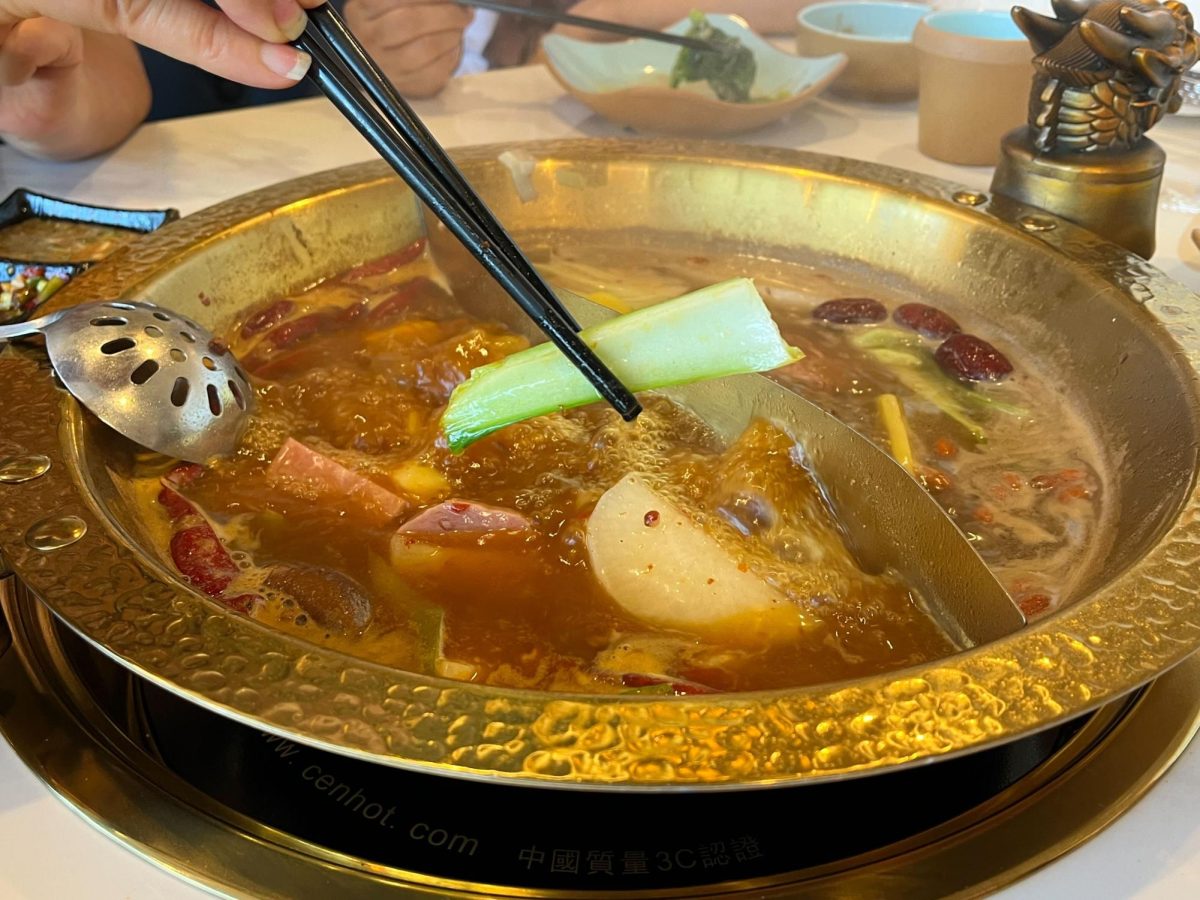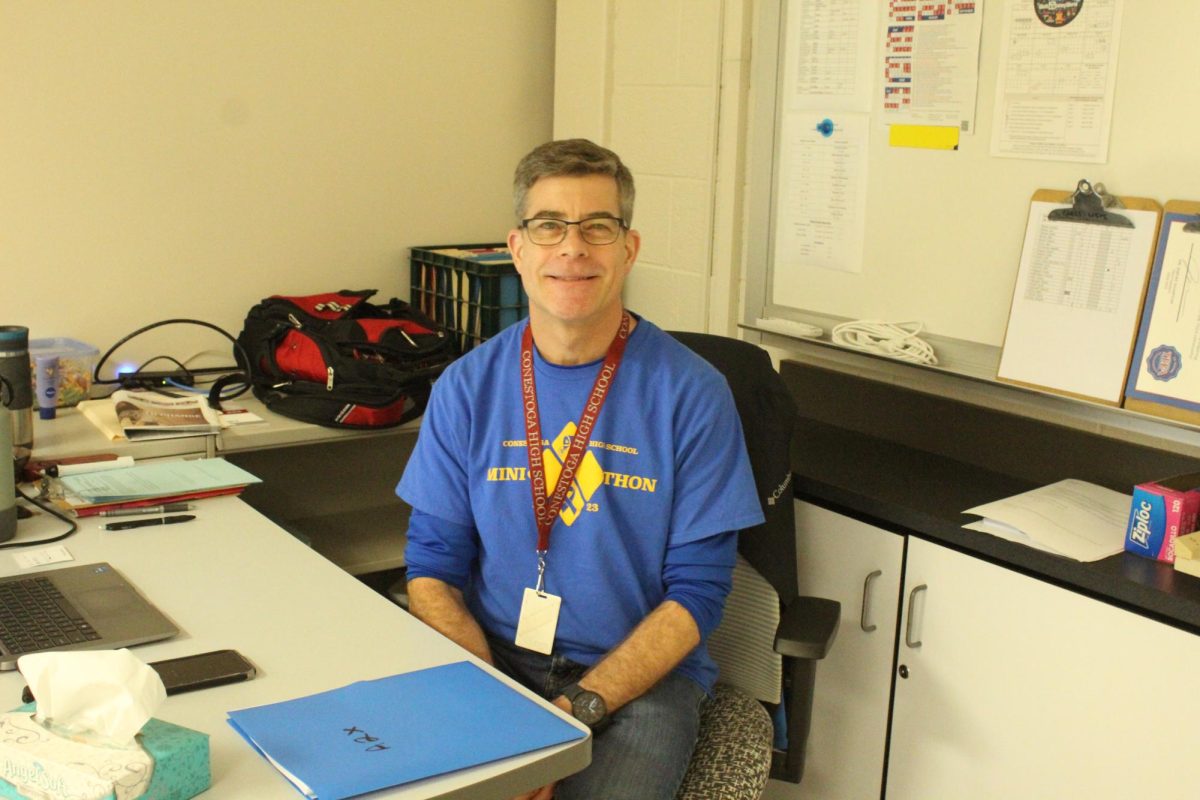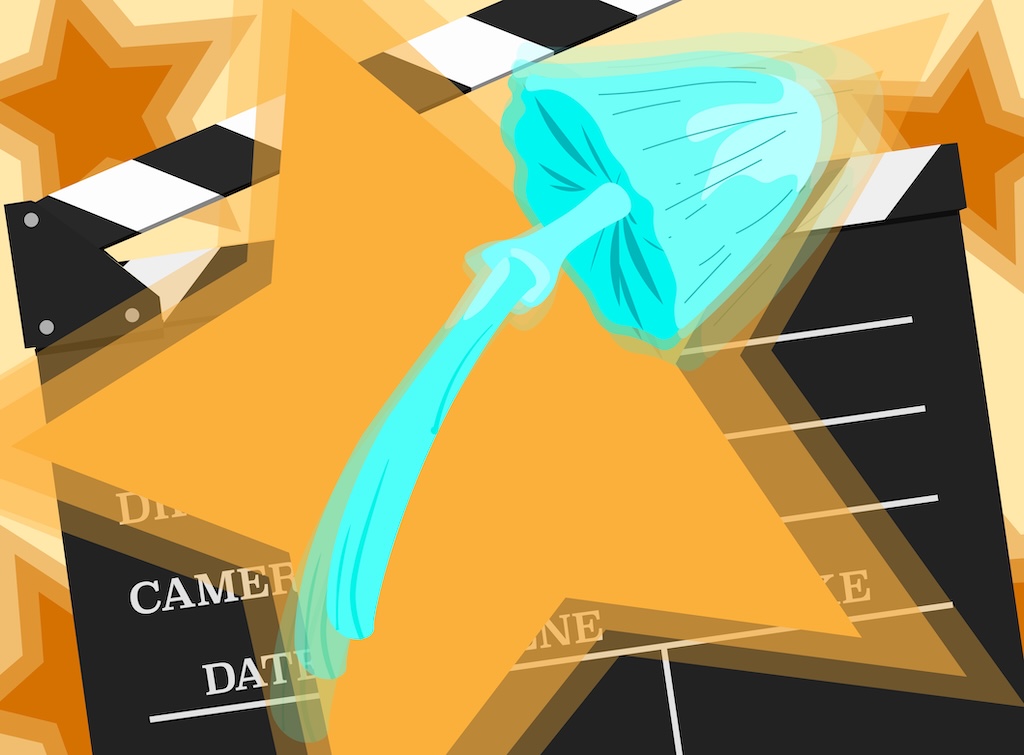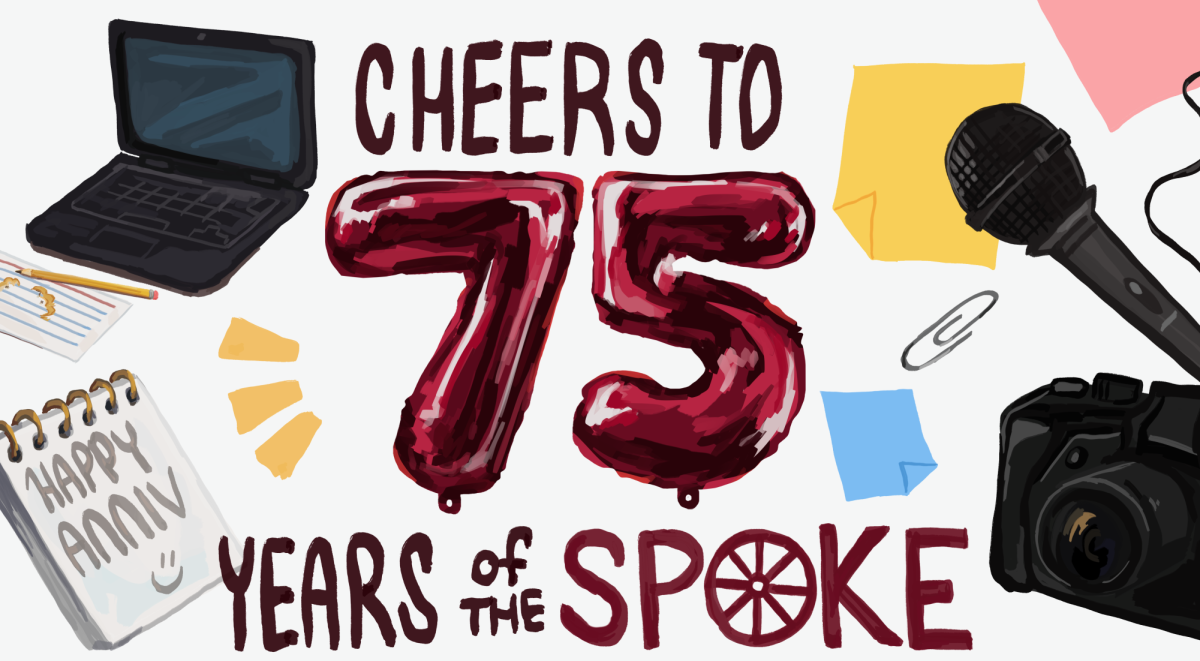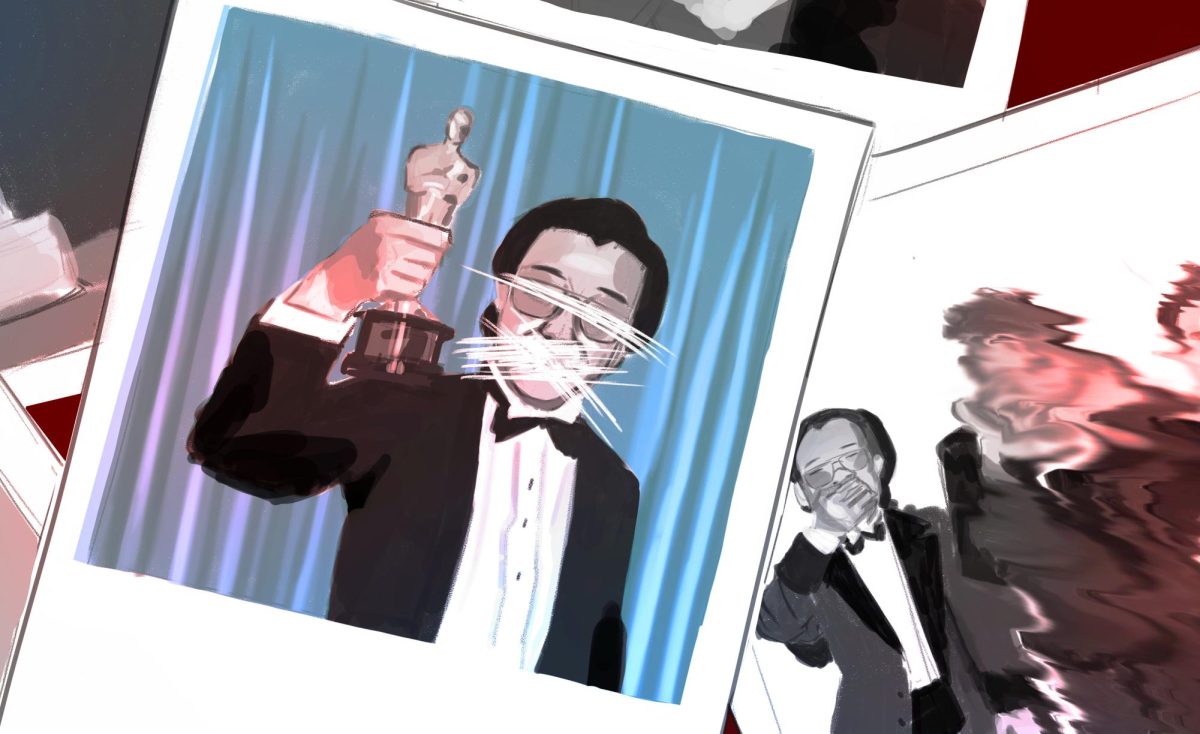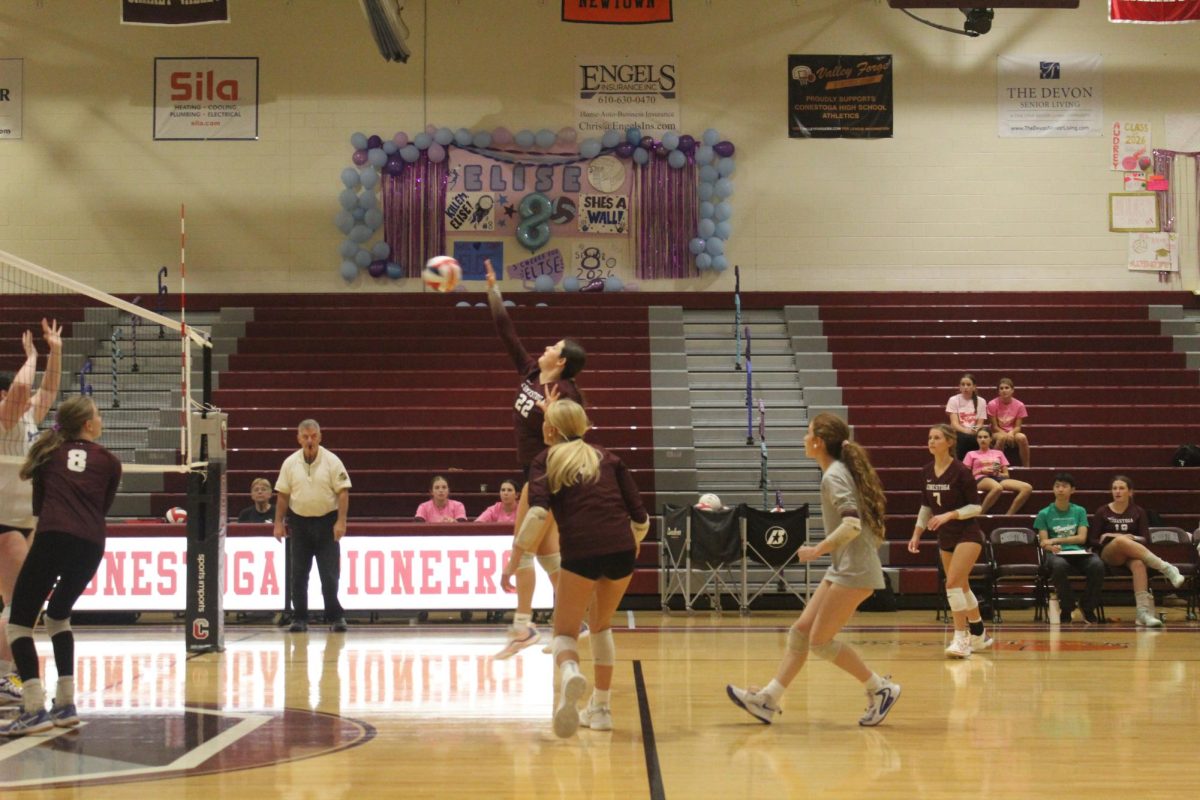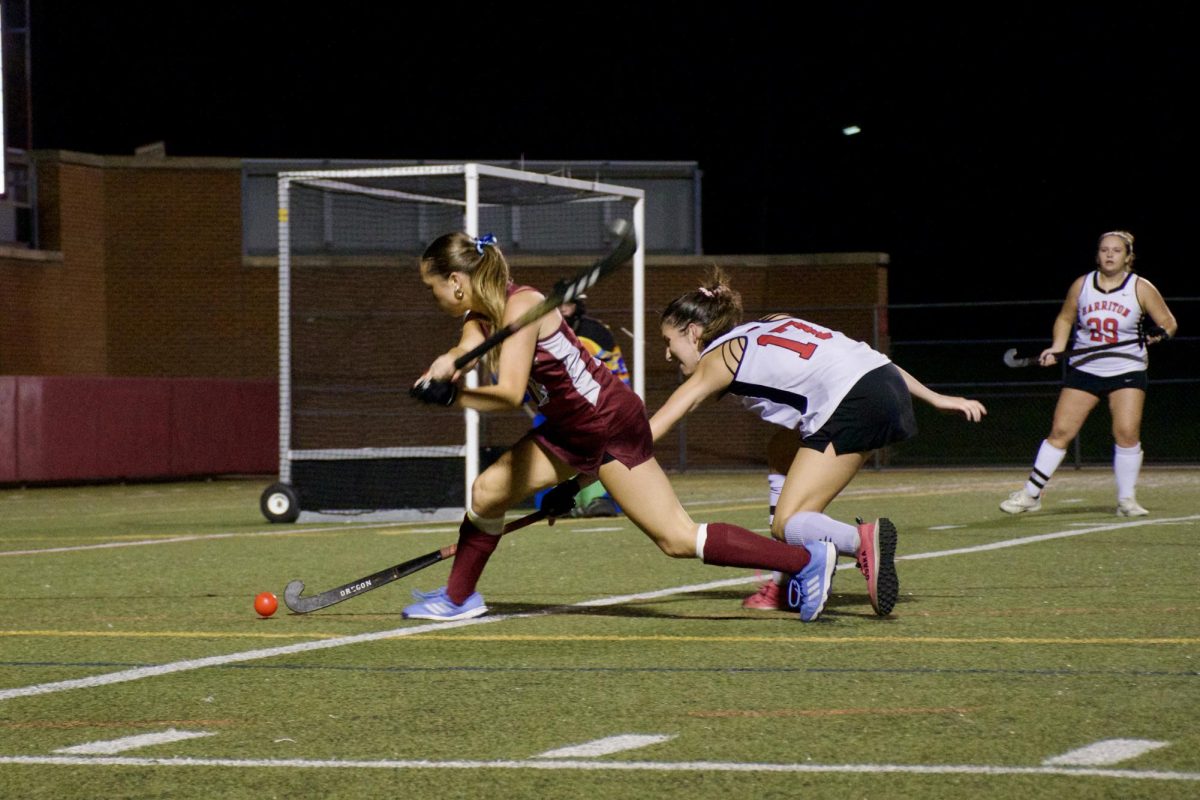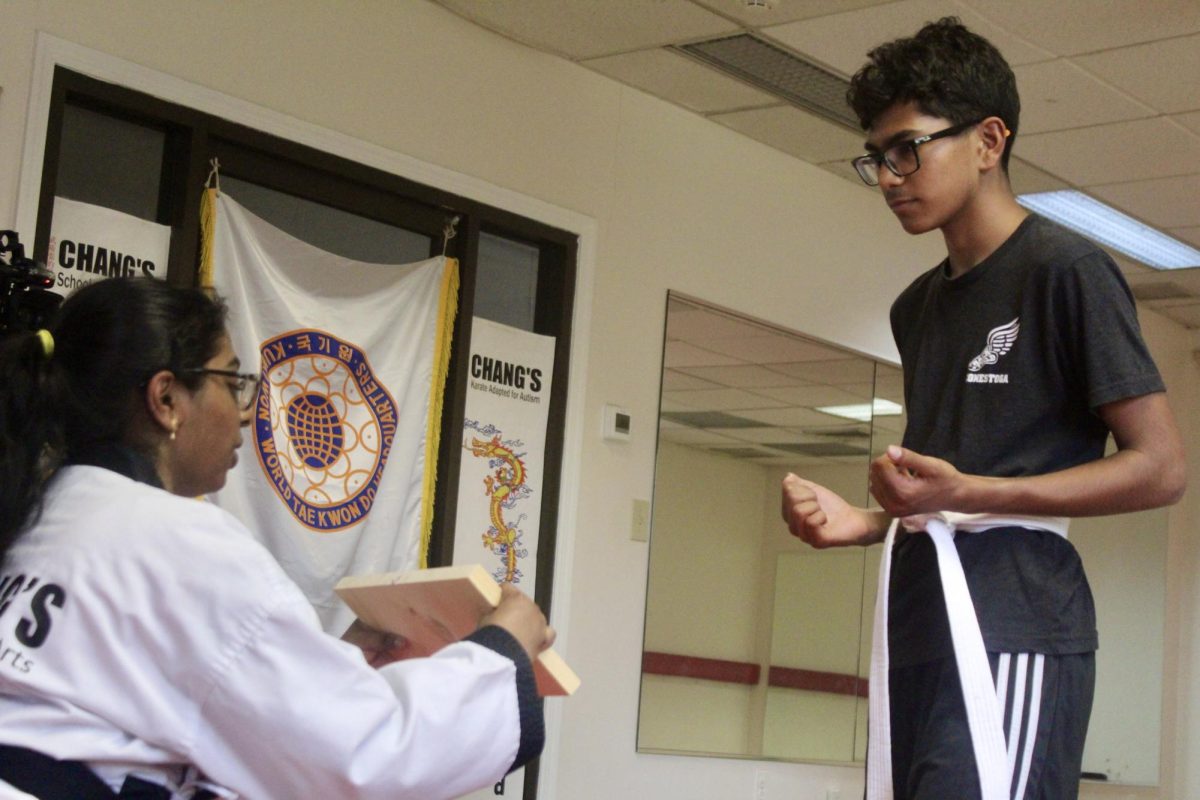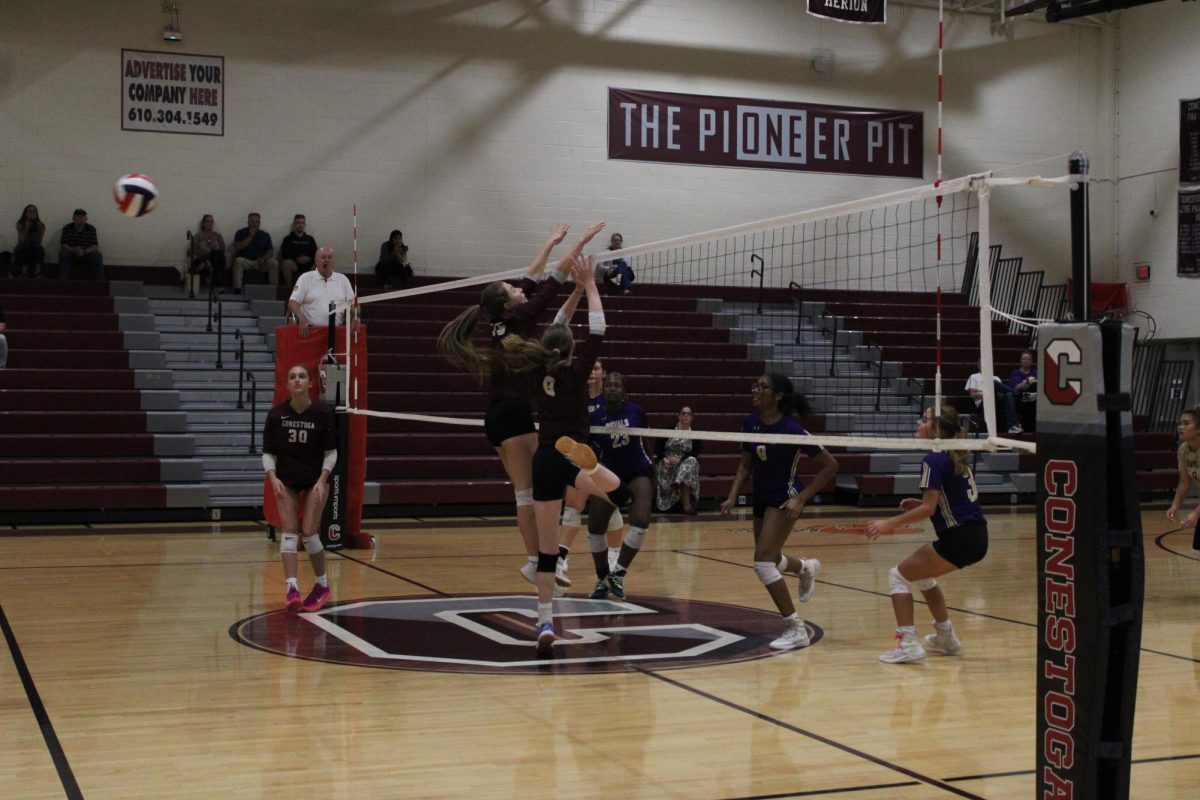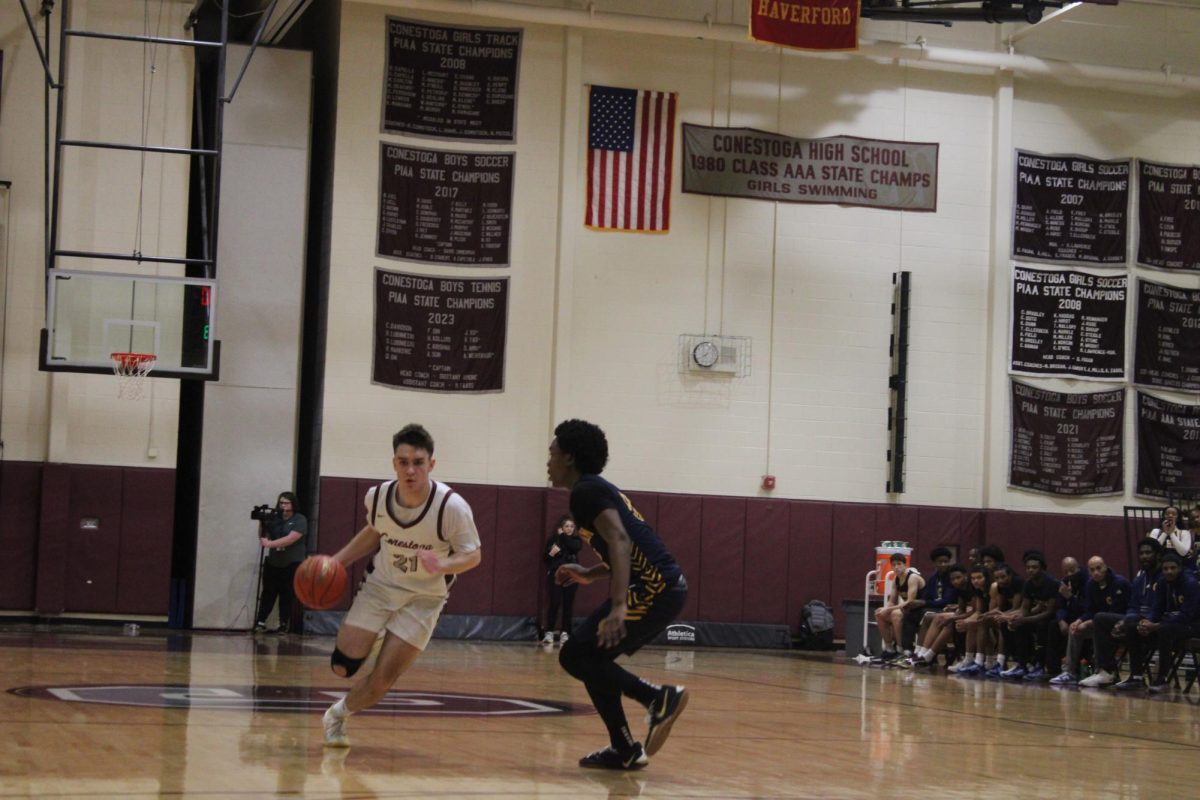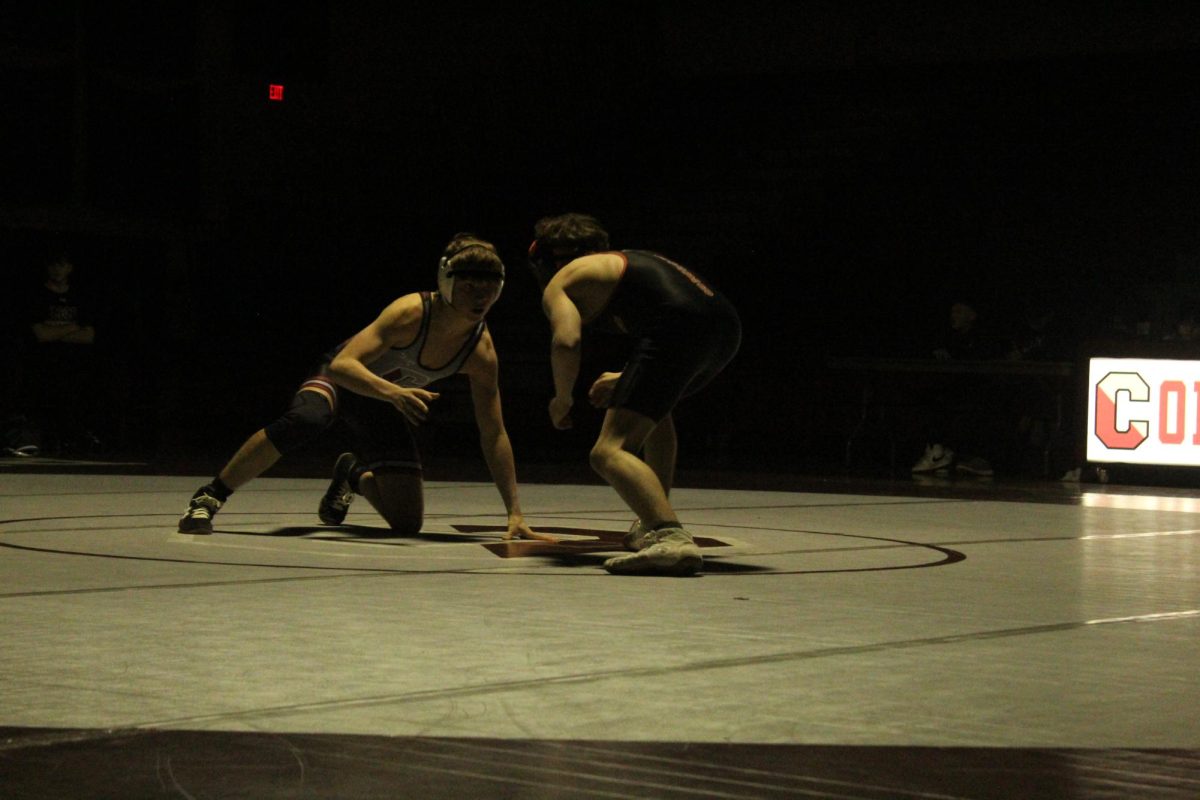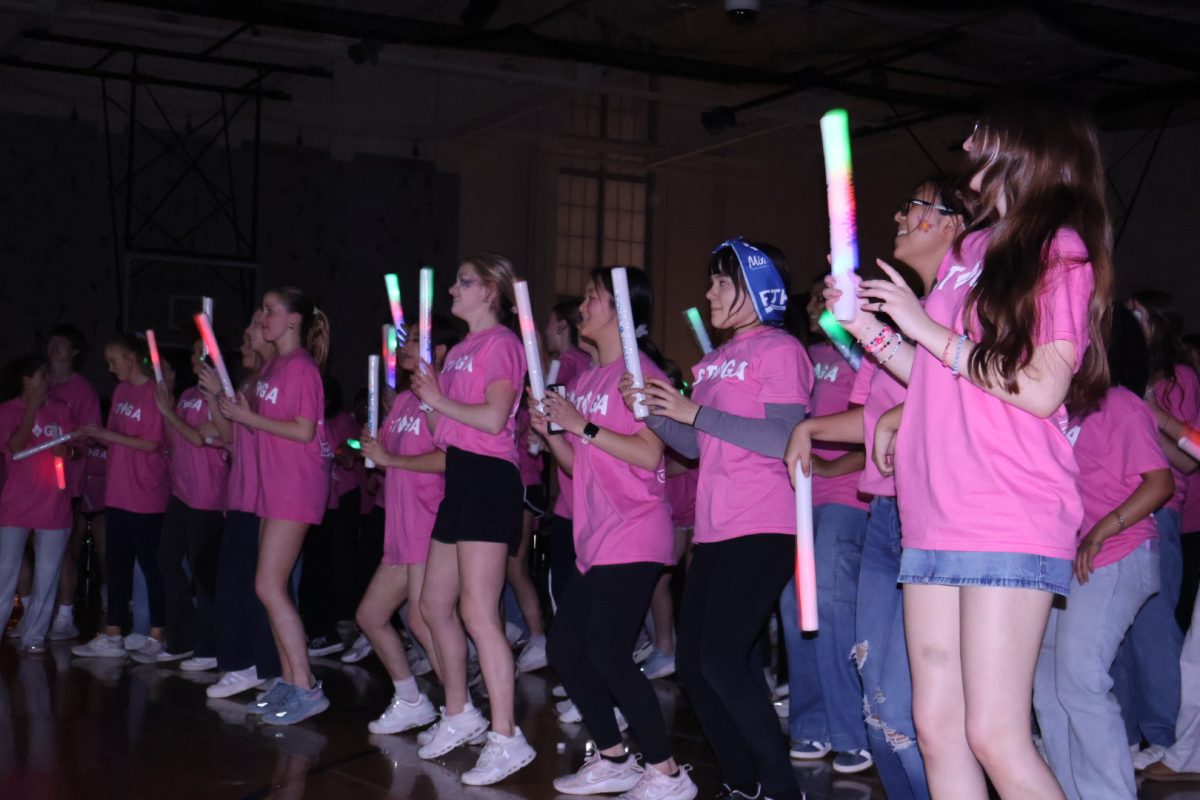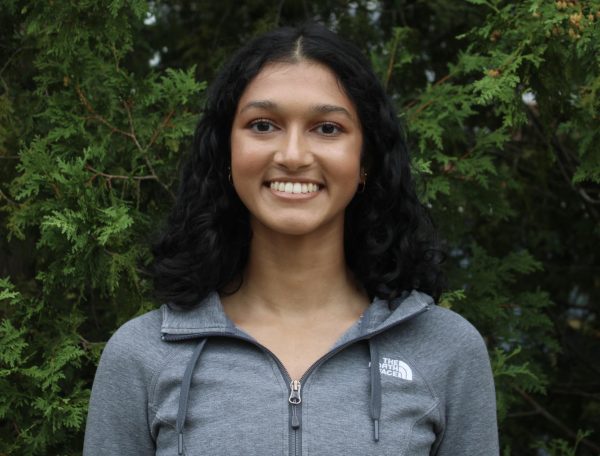By Raima Saha, Co-Managing Editor
When I thought of archery, I used to imagine my distant ancestors perched behind shrubs, hunting for food to make it through the day. They must have been strong and poised to secure their target, knowing very well that the fine line between success and failure often meant the difference between life and death.
The setup that greeted me at Conestoga Archery Club practice at Advent Lutheran Church in West Chester immediately dispelled my assumptions. The church building’s gymnasium was transformed into an archery range, with purple insulation boards protecting the walls from arrows and targets lining the far end of the building.
Friendly smiles from those I knew and didn’t greeted me. Junior and Design Editor Mary Wolters, an avid archer herself, helped me set up my gear while club president and senior Kyle Xu patiently instructed me on the anatomy of the bow and the technique needed to shoot.
There was so much to remember. From adjusting the placement of arrow fletchings — little tabs on the end of the arrow — to ensure the arrow didn’t veer off to the side to confirming that I was holding the bow correctly, I felt my mind working in overdrive to make sure I didn’t miss anything that could hinder my shot.
I aligned my sight — a circle used to guide placement of the shot — to my target, keeping my goal in mind: hit the bullseye. My first round was a failure, with my arrow missing the target board completely. Considering that my target was five yards away from me and everyone else’s targets were 20 yards away, I felt discouraged. The second round was better — my shots actually hit the target, and I managed to achieve clusters of arrows on my target board.
However, I felt farther away than ever from my goal of a bullseye. I asked Wolters and Xu what made an archery session productive and learned that the goal was to achieve groupings of arrows in the same spot rather than hitting a bullseye. Precision and consistency took precedence over accuracy, a fact that astonished me as someone conditioned to prefer accuracy above all else.
I eventually learned that it takes skill to strike the same spot over and over again and that it was easy to change the location of where the shots landed by adjusting the sight. However, sporadic shots meant that you weren’t aiming at the same spot, a fundamental discrepancy that yielded inconsistent results and hindered the potential for accuracy.
I realized that I wasn’t failing as catastrophically as I originally thought. Yes, I was still trying to aim for the bullseye, but I was no longer concerned if I didn’t hit it, instead focusing on how consistent my shots were relative to each other.
With this new goal in mind, I realized the importance of technique in achieving consistent results. Keeping your hand pulling the string of the bow close to your jaw is imperative to keep the arrow straight, which I learned as Xu kindly gave me tips to improve my precision. I became hyperaware of every part of my body, mentally scanning for technical inconsistencies (or trying to, at least) to give myself the chance to hit the best shot possible.
I did not end up hitting a bullseye. However, I did hit a balloon placed on top of the bullseye, proof that I had some semblance of accuracy after the hour-long practice. While I may not become a Division I archer, I now have a new resolve to strive for consistency rather than perfection, a mindset applicable to other areas in my life.
Raima Saha can be reached at [email protected].





